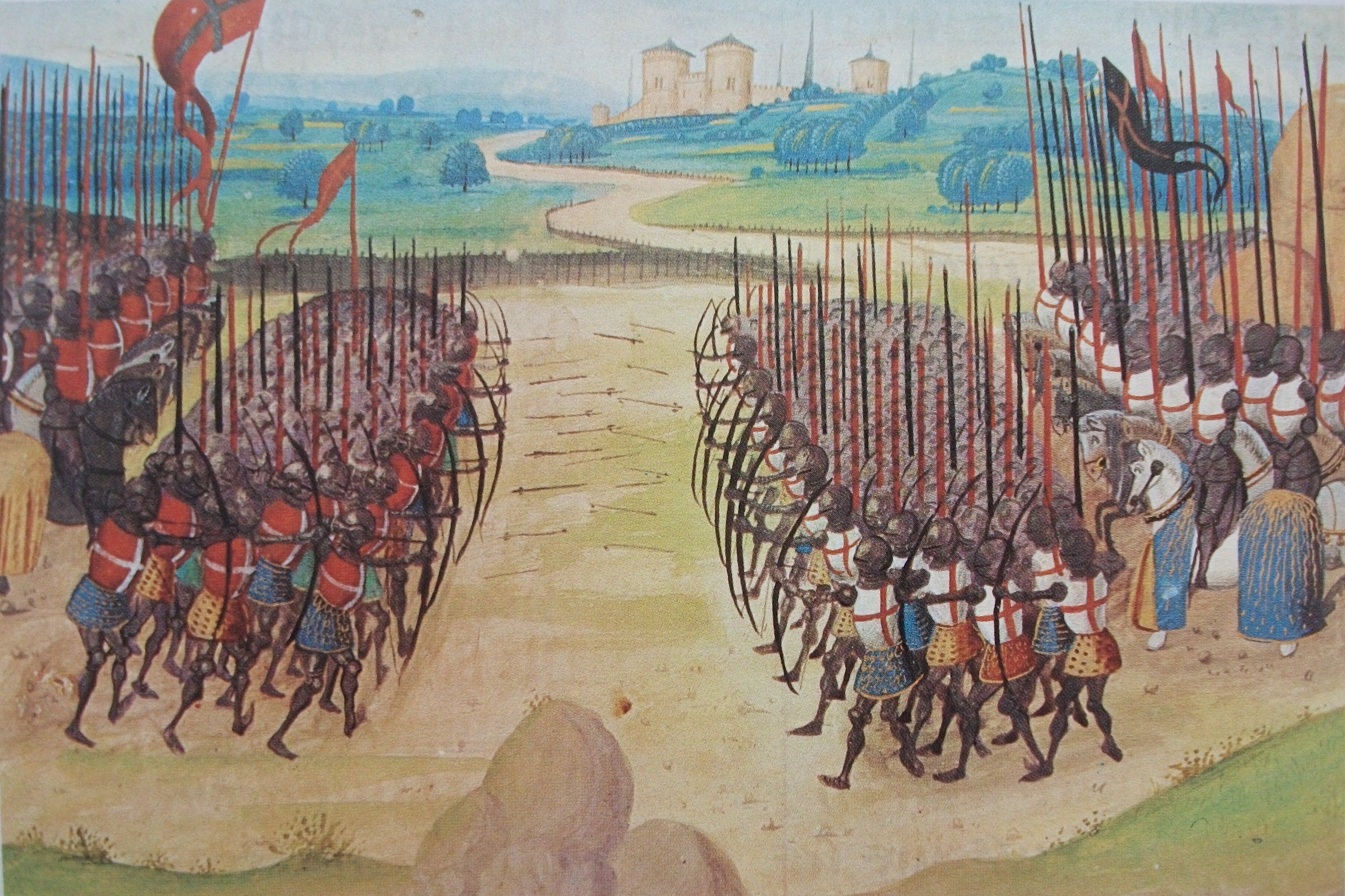
October 22, 2015, by Harry Cocks
Agincourt: a Hollow Victory?
On October 25th 1415, an English army, on its last legs after a two-week march, inflicted a crushing defeat on the flower of French chivalry near a village in Picardy called Agincourt. Their triumph, the 600th anniversary of which is on Monday, seemed to sum of the indomitable spirit of the English nation: steadfastness, tenacity, and pluck in the face of adversity. But in a new article for History Today Gwilym Dodd of Nottingham’s History Department questions Henry V’s victory and the reputation for martial effectiveness that he subsequently enjoyed. Agincourt appeared to be a great victory, but did the battle lead Henry into self-delusion, encouraging him to pursue unrealistic military and political goals?
In many ways, Dr Dodd argues, Henry’s military reputation is justified. In particular, the hidden position of his archers on the flanks of the battle ensured the element of surprise was crucial. They were also defended from French cavalry charges by a line of wooden stakes. Equally, the co-ordination of men-at-arms and archers allowed the French charge to be first blunted by archery and then decisively halted by footsoldiers. French tactics also played into Henry’s hands – the site of the battle was poorly-chosen, partly out of over-confidence resulting from previous efforts on Henry’s part to avoid battle at Aubigny. In fact, that the battle took place at Agincourt was partly the result of Henry’s evasive manoeuvres after the expensive siege of Harfleur, during which over 2,000 men died of dysentery.
The real legacies of Agincourt were twofold: first, the English emerged as the stronger military force, the French having lost around 6,000 men, 2,000 of whom were princes and nobles, including seven members of the French royal family. Secondly, Agincourt encouraged Henry’s campaigns in Normandy, leading to the capture of Caen in September 1417, then Alencon, Mortagne, Belleme, Falaise and finally, the biggest prize of them all, Rouen, in January 1419.
But these victories obscured the weakness of the English position and the deeply flawed nature of Henry’s strategy. That relied on splitting the French by doing a deal with John, Duke of Burgundy instead of the French monarchy, and thereby convincing them that their military situation was hopeless. However, John ultimately refused to make a deal, leaving Henry with the realisation that overall victory was still a long way off. Henry was helped when, in September 1419, John was murdered by one of the Dauphin’s attendants. The duke’s son, Philip, then became a sworn enemy of the French King, and joined the English, leading directly to the Treaty of Troyes (May 1420). By its terms, Charles VI agreed to the marriage of his daughter to Henry, effectively ensuring that England’s monarch would in due course become King of France. However, this was another illusory triumph, Dodd argues, for the Dauphin still controlled half of France and was hostile to the agreement. Henry therefore had to challenge the Dauphin militarily in order to secure his gains in France. This, “committed England to a war with no end in sight.” The unsuccessful conclusion of the Hundred Years War with France thirty years after Agincourt was therefore the consequence of Henry’s victory in that battle and the failure of his subsequent diplomatic manoeuvring.
Gwilym Dodd, “Henry’s Hollow Victory”, History Today (October 2015)
No comments yet, fill out a comment to be the first

Leave a Reply